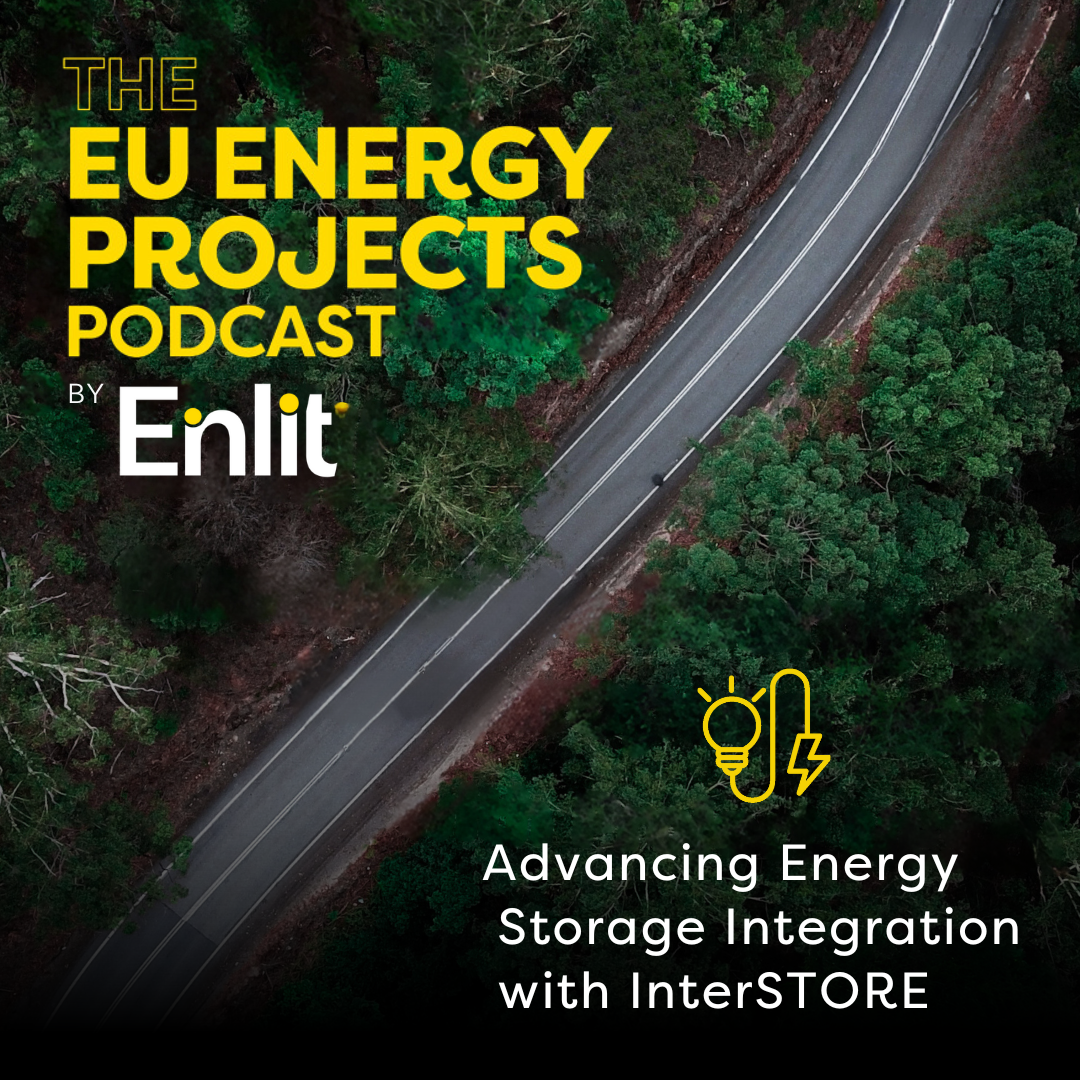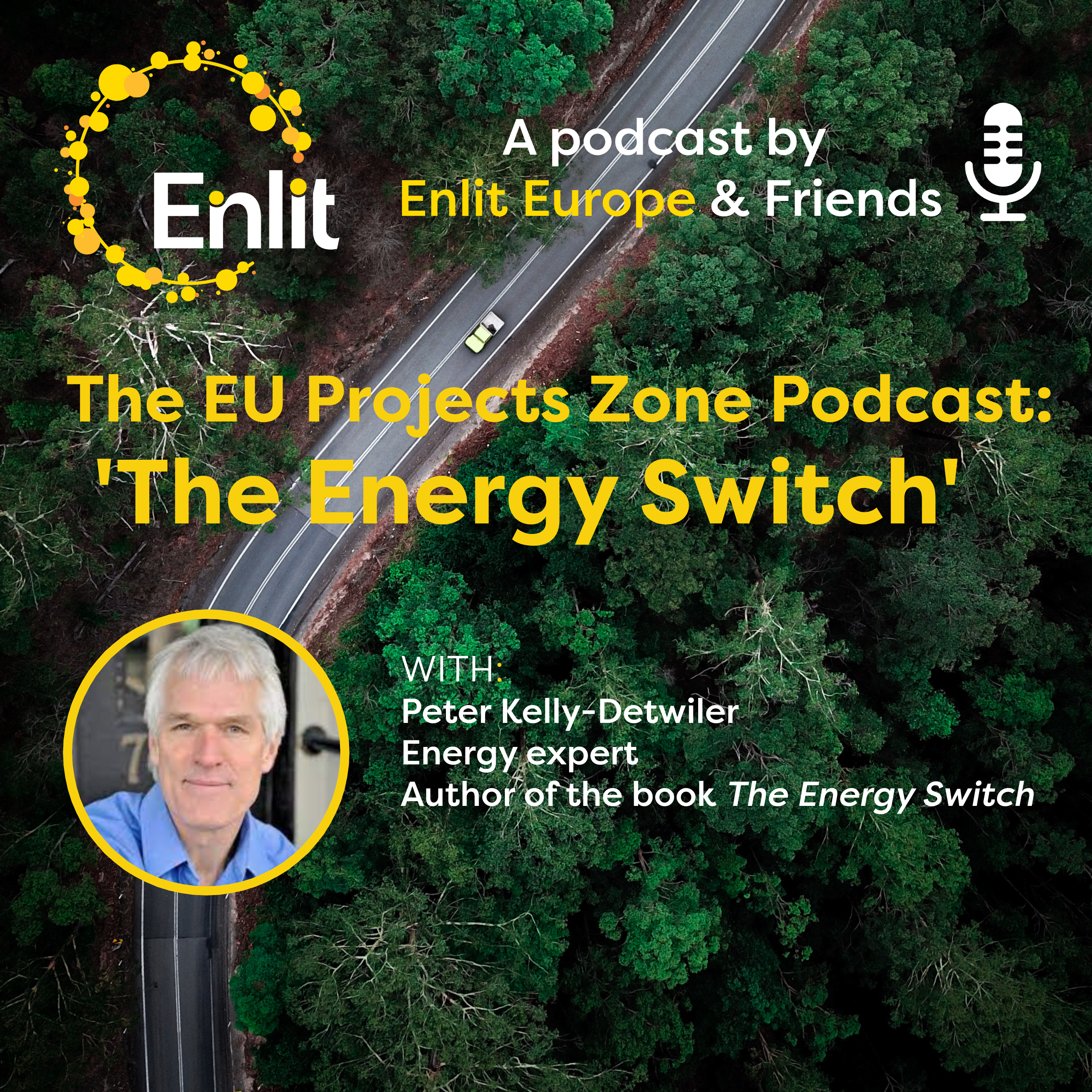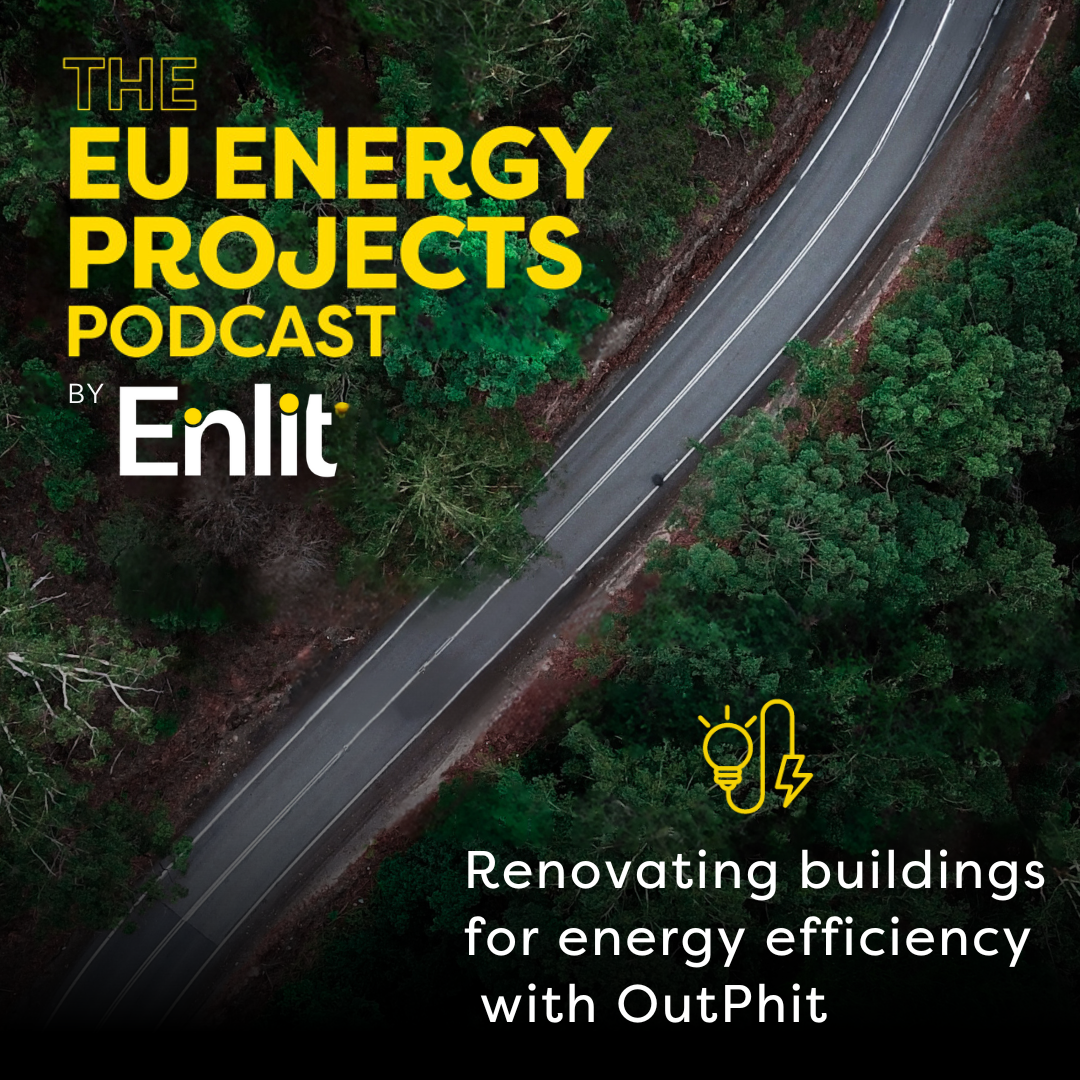Episode Transcript
[00:00:10] Speaker A: Welcome to the EU Energy Projects Podcast, a podcast series from ENLID and friends focusing on the clean energy transition for the European Union and the EU Commission funded energy projects that will help us achieve it. My name is Areti Daradimu, I am the editor of the EU Energy Projects Podcast and your host project, Interstore is focused on advancing the integration of distributed energy storage and resources, paving the way for the future of energy management. This EU funded initiative is developing innovative open source tools to hybridize and monetize storage flexibility using technology agnostic middleware that simplifies the complexities of energy storage integration. Together with Professor Antonello Monti, Project Coordinator of Interstore and my guest for this episode, we will explore how this project is addressing vendor lock in promoting investment in storage and testing real world solutions to shape the future of Europe's energy ecosystem.
Anto, thank you very much for being here with me. Can you explain the main objectives of the project please?
[00:01:29] Speaker B: Yes, thank you for the question. Thank you for inviting me here today. You briefly already summarized we see storage as a key resource for the future energy systems. There is no possibility to run the future systems with a high volatility without storage. So the goal here is to make the use of storage easy, independently from the technology, independently from the provider, and making sure that this is a resource that can be usually exploited to optimize also their renewable generation. So that becomes a flexible asset for the grid and that is accessible and also that can be easily aggregated. This is I think another important feature.
[00:02:13] Speaker A: Yeah, aggregation is quite an important feature I would also say, but the project focuses on developing middleware that virtualizes storage technologies. Could you elaborate also a little bit on how this works and what makes it innovative in terms of simplifying integration?
[00:02:30] Speaker B: Yes, what we mean by this agnostic basically is, let me say double level one is we want to be independent from the source of the type of storage. There are different means to storage energy, but from the point of the grid this doesn't make any difference. So when I access the resource I should not depend on what type of storage is behind the other is I should not depend on the specific vendor that is providing so that each component is presented in the same way. How do we achieve this is allowing and a standard interface based on an industrial international standard, which is the IEEE 2030.5, which is a standard specifically developed to manage in a flexible way distributed energy resources and quite successful outside Europe, but not that much in Europe. So in the U.S. particularly in California, this is a very successful story and in Australia also there are very concrete applications. For some reason this in Europe didn't pick up. And that's one thing we want to fix. But at the same time we don't just replicate something was done somewhere else. We implement the standard in a more comprehensive way than others that are available and also with the mechanism. So specific protocol support that will make it faster, more efficient, so that we can cover a wider set of use cases, compared what is already in the.
[00:03:59] Speaker A: Market and it will fit more to the European needs, let's say yes.
So how does this agnostic approach prevent vendor lock in and what advantages does it bring to customers and energy providers alike?
[00:04:14] Speaker B: Well, if you imagine the future, everybody will have this API that is based on 20.30.5. I will be able to integrate any asset without any difference, independently from where it's coming from. So this is the purpose of having those standards. And then of course, if you have an aggregation platform, you can aggregate any device at any moment and not every time coming and readapting for the specific of that resource. And that's where you have a very quick way to integrate new devices in a system.
[00:04:49] Speaker A: Did you know that Enlit has another podcast? The Energy Transitions Podcast is a broad ranging bi weekly podcast about the people accelerating the energy transition in Europe and beyond. You can find it on Spotify, Apple or wherever you enjoy your podcasts.
The project will facilitate the monetization of storage flexibility. Could you explain how this will work and how Interstore's tools will encourage more investments in energy storage?
[00:05:20] Speaker B: Sure. This is a very important point, I think, and also in the vision of the project we mentioned before that we integrated this standard 20.30.5. But there is another dimension which makes the project, let's say, significant and innovative that we get into the data space technology.
And why is that critical? Because it's through the combination of these two solutions, the standard and the data space, that we want to find ways to monetize your storage and monetize the data sharing. Because at the end we have this multiple need. The project itself comes from the storage topic. So storage is the first priority, but through the storage we find a way to justify and support in general data sharing. And we identify specifically four methods of valorization that we will also test in our field test. One is improving the PV performances, the second is something related to charging, so what we call green ranking of the stand of your storage. And so it's a sort of gamification if you like. The third is the optimal dispatch or storage solution also depending on the different resources available. And the last one is about the anomaly detection for preemptive maintenance.
[00:06:37] Speaker A: Okay, this is a very important point because preemptive maintenance is something that I think most solution providers, companies, etc. Are very focusing in. Would that be one, let's say, of the most important focus points or is it secondary?
[00:06:52] Speaker B: I agree with you. The preventive maintenance is very relevant for a variety of reasons when it comes to grid application. First of all, because I remember discussing with grid operators for them, more than identifying faults would be to avoid faults. So if you think of in the future we should have millions of devices, it would be great if we can always anticipate when each one of those may go through some kind of problem so that they don't bring the problem to the system. So I see the pre emptive maintenance not only from the owner of assets very critical because you want to avoid to be offline, but also from the system perspective to guarantee continuity of service and quality of service.
[00:07:32] Speaker A: And this will work well with the open source technology that you are using because one of the project's goals, let's say, and correct me if I'm wrong, is to deploy and demonstrate open source tools in real life environments. So could you please give me some examples of how this will work?
[00:07:49] Speaker B: Definitely. Well, I'm a strong believer of open source. There are many reasons to support open source, but the key point is that when you want to reach interoperability, I call it standardization. From the bottom. If we agree on using the same software, we are immediately interoperable. We don't need to write a lot of rules so we can come to an agreement to use a common software. And then what is in the software is the standards. It doesn't kill the idea of standards, it just comes from the bottom. Agree on what we have to do first and then write in what that means. And this is way faster. And that's where I see a big role for open source. Because we don't have the time in the energy transition to agree on what we should do and then agree on the standard that then do things is too slow. So we start from doing things and then coming up to a standard. And this is only possible if people cooperate in communities. But the other point is also a monetary thing. What we standardize what we do open is something that everybody has to do. So why do we do it 20 times instead of doing it together? It's not what they're going to sell the product, these standards. So exactly, for example, 20, 30.5, that we have nobody will buy a product from company X for the specific fantastic implementation of 20.30.5, but just for the fact they have it. They have to have it. So if we work that together, we share the cost of making those things. And that's where Open Source brings a lot of saving. But when I talk about Open Source I mean something regulated. So what it means is it's not. I develop some code, I put it on GitHub and people play with it. This is not professional, this is not industrial. So we need communities that agrees on rules. That's why I'm very active in the Linux foundation energy as an entity that is managing the process of software development in a professional way that brings at the end a high level of quality for the product, legal protections and everything. So that makes the Open Source not an academic exercise, that I'm an academic. We love it, but that's not good for industry. When we bring in those communities, we are the industrial side of Open Source.
[00:10:04] Speaker A: Exactly. And in a way, to be honest, you answered a question for me that I didn't have the time to ask you, which is about safety because it's nice to have open Source. It's nice to have a software that everybody works on. But will it be safe? I think the way that you answered with Linux, et cetera.
[00:10:21] Speaker B: Yeah, this is the first priority for all the Linux Foundation. I focus on the Linux foundation energy. They have process internally to guarantee the security of your software. And what is relevant is also that if a problem appears, it will be fixed immediately. And the more people look into the code, the more likely they will identify issues. If it's only me writing my code, it will never be secure. So the classical idea that a closed development is safer because I'm the only one knowing is totally wrong. It's not safe at all. Is doing things with good process sharing and being ready to act as soon as possible.
[00:11:05] Speaker A: It is safe. Safe to say that interstore brings a couple of unique innovations to the sector. So looking ahead, what long term impact do you envision for the energy sector once Interstore solutions are fully implemented?
[00:11:22] Speaker B: I think we contribute in two main directions.
This idea of the new version, let me call it of 20. 30.5 is something that will facilitate integration of renewables, integration of storage. So let me say we'll make the use of distributed energy resources easier. Whatever is the way, whatever is the use case will be easier and that will speed up the adoption. I think the other part, I think we have been really contributing to the idea of data spaces because not only we say we adopt data space because we need sharing data, but we enriched the OneNet connector, which is the key ingredients of data space that we use with something unique which is an open source user interface. This makes the use of the connector easier for the user and data space is again one of those topics that sounds really complicated, difficult to explain and that's vital that people can access in an easy way. Before we had only interfaces that were user interface very good, but they were proprietary. Now we have an open one so everybody can have access and use them. Last but not least, combining this we identify some monetization aspect and that's critical too. It's good to have tools to contribute to technology, but you need to unlock the adoption and I think monetization is critical in this case.
[00:12:51] Speaker A: I couldn't agree more. Thank you very much Anto for this very interesting conversation.
[00:12:56] Speaker B: Thank you. It was a pleasure.
[00:12:59] Speaker A: You've been listening to the EU Energy Projects Podcast, a podcast brought to you by Enlite and Friends. You can find us on Spotify, Apple and the Enlite World website. Just hit subscribe and you can access our other episodes too. I'm already Daradimu. Thank you for joining us.




